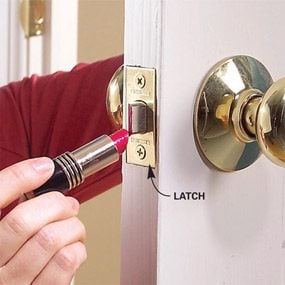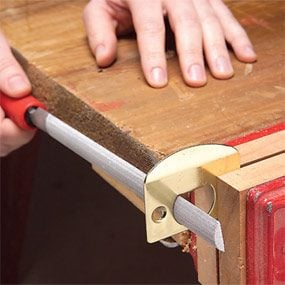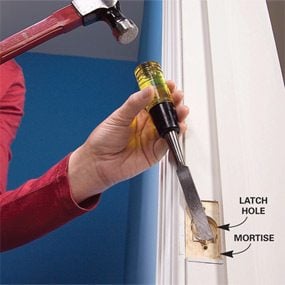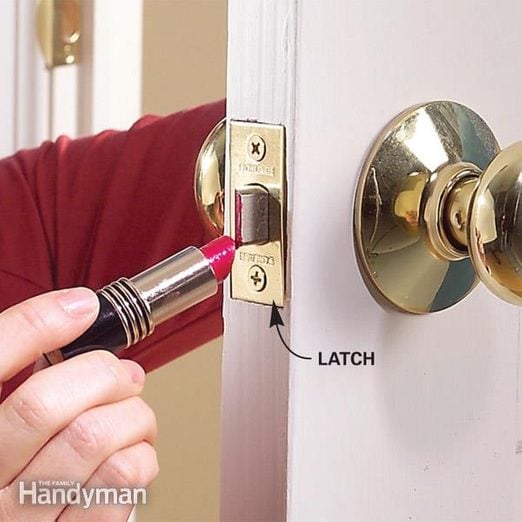How to Fix a Door That Won’t Stay Closed
Updated: Mar. 17, 2023
When houses settle, doors can settle along with them, resulting in misaligned door latches. Solve the problem with a file, a chisel, and a dab of lipstick (any shade will do).
Introduction
Loose door latches can happen whether your home is just off the market or old and full of character. The reasons vary. Here's a guide on how to assess the situation, figure out what's wrong with your door's alignment, and correct the issue so that all your doors click closed with no issues.Tools Required
- 4-in-1 screwdriver
- Cordless drill
- Drill bit set
- File
- Hammer
- Vise
- Wood chisel
Materials Required
- Lipstick
- Wood filler
Project step-by-step (4)
Lipstick Test
When a door latch won’t catch, it’s because the latch doesn’t align with the hole in the strike plate. Sometimes you can clearly see the misalignment. If not, do the “lipstick test.”
- Smear lipstick on the latch and stick masking tape to the strike plate. As you close the door the lipstick will stain the part of the masking tape it touches, leaving a record of the exact point where the latch contacts the plate.

Tighten the Hinges First
If you find that the latch contacts the strike plate too high or too low, make sure all the door’s hinge screws are tight.
If that doesn’t solve the problem, try this trick: Remove one of the screws on the jamb side of the hinge and drive in a 3-in. screw. The long screw will grab the wall framing and draw in the whole doorjamb slightly. To raise the latch, do this at the top hinge. To lower the latch, do it at the bottom hinge.
Enlarge the Strike Plate Hole
If long screws don’t solve the too-high or too-low problem, measure the misalignment of the lipstick marks on the strike plate.
- If the latch misses the strike plate hole by 1/8 in. or less, remove the strike plate and enlarge its hole with a file.
- Pro tip: A half-round file matches the curve of the latch hole.

Move the Strike Plate
If the latch contacts the strike plate at the correct level but doesn’t go in far enough, or if the latch strikes more than 1/8 in. too high or too low, you’ll need to reposition the strike plate.
- You can move the strike plate up or down and in or out.
- Use a sharp chisel to enlarge the strike plate mortise. Then hold the strike plate in place and drill new 1/16-in. holes for the screws.
- Install the strike plate and fill the gap in the mortise with wood filler. Remove the strike plate to paint or finish the patch.

